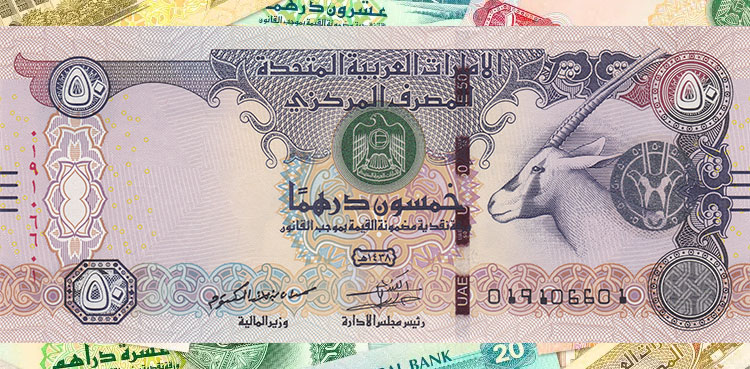Karachi/Dubai- August 11- The UAE Dirham is trading at PKR 76.93 today, continuing a steady strengthening pattern against the Pakistani Rupee that has become increasingly evident over recent months. This latest exchange rate represents part of a broader trend that’s delivering tangible benefits to anyone converting between these two currencies.
AED to PKR- Click Here for Daily Updates
Looking at recent movements, the past month has seen relatively minor fluctuations, with the rate moving from PKR 77.3541 to PKR 77.3223 – a small decline of PKR 0.0318. However, the real story emerges when examining longer timeframes, where the UAE Dirham’s strength becomes much more apparent.
The three-month average shows a more noticeable shift of PKR 0.0363, but it’s the six-month period that reveals the most significant change. Over this timeframe, the average rate has declined by PKR 0.0574, representing the biggest improvement we’ve seen in any single period for the Dirham against the Pakistani currency.
Major Annual Shift Benefits Currency Converters
The most striking development becomes clear when looking at the full year’s performance. Twelve months ago, the UAE Dirham was trading at an average of PKR 80.4675, compared to today’s PKR 80.4344. This substantial improvement of nearly PKR 3.5 creates real value for anyone converting larger amounts between these currencies.
This annual shift has practical implications for thousands of people. Pakistani expatriates working in the UAE are finding their earnings stretch further when sending money home, while businesses importing goods from the UAE are experiencing cost benefits. The sustained nature of this trend suggests it’s not just temporary market volatility, but reflects deeper economic fundamentals between the two countries.
Trade relations between Pakistan and the UAE, worth over $8 billion annually, are also feeling the impact. Pakistani importers are benefiting from better rates when purchasing UAE goods, while the currency movement reflects the broader economic stability that the UAE has maintained compared to regional peers.
Currency analysts point to several factors driving this trend. The UAE’s diversified economy continues to show resilience, supported by strong fiscal policies and strategic economic planning. Meanwhile, Pakistan faces ongoing economic challenges that have put pressure on the rupee across multiple currency pairs, not just against the Dirham.
The oil market dynamics also play a role, as Gulf currencies like the UAE Dirham typically benefit from stable energy prices, while countries like Pakistan face additional pressures from energy import costs. Regional monetary policy differences and varying inflation rates between the two economies further contribute to the exchange rate movements.
Looking ahead, several key factors will likely influence whether this trend continues. Pakistan’s progress with economic reforms and its ongoing IMF program will be crucial for rupee stability. Meanwhile, the UAE’s monetary policy decisions and the broader global economic environment will affect Dirham strength.
For individuals and businesses dealing with these currencies, the current environment presents both opportunities and planning considerations. Those converting from Dirhams to Pakistani Rupees are clearly benefiting, while the reverse conversion requires more careful timing and strategy.
The sustained six-month improvement trajectory suggests this isn’t just a temporary market adjustment. Instead, it reflects the different economic paths these two important Middle Eastern economies are following, with the UAE maintaining its position as a regional financial hub while Pakistan works through its economic challenges.
Current market data shows the UAE Dirham at 76.93 Pakistani Rupee, representing a significant shift from historical averages and highlighting the importance of staying informed about currency trends for anyone with financial interests spanning these two markets.


Leave a Comment